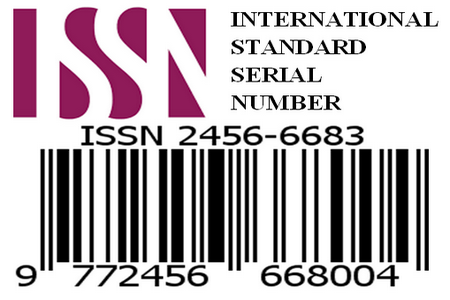The Aesthetic of Dysphoria: Transgender Narrative and Affect Theory
Author(s): 1.Sara Eliana Kuriakose and 2.Dr. K. Maragathavel
Authors Affiliations:
1Research Scholar, Department of English and Foreign Languages, College of Engineering and Technology, SRM Institute of Science and Technology, Chengalpettu, Tamil Nadu, India
2Assistant Professor, Department of English and Foreign Languages, College of Engineering and Technology, SRM Institute of Science and Technology, Chengalpettu, Tamil Nadu, India
Dysphoria, particularly gender dysphoria, is a central theme in transgender narratives, capturing the affective and embodied struggles of individuals navigating their gender identities. This paper explores the aesthetic of dysphoria in transgender autobiographical literature, with a specific focus on I Am Vidya: A Transgender’s Journey by Living Smile Vidya. Affect theory, as developed by scholars such as Sara Ahmed and Brian Massumi, provides a critical lens for examining how dysphoria functions beyond clinical and psychological frameworks, highlighting its role as a socially mediated and affectively charged experience. Through an in-depth analysis of I Am Vidya: A Transgender’s Journey, this study investigates how affective responses—ranging from alienation and suffering to empowerment and resistance—shape the narrative structure and self-representation of transgender individuals. The paper employs a mixed-methods approach, integrating close textual analysis with theoretical insights from cognitive-functional linguistics and gender studies. It examines how linguistic expressions, metaphors, and emotional intensities construct an aesthetic of dysphoria that transcends mere personal testimony and becomes a means of socio-political critique. Findings suggest that I Am Vidya not only portrays dysphoria as an internal struggle but also as an affective response to systemic exclusion and societal marginalization. The narrative’s emotional landscape reveals how transgender individuals negotiate their identities through embodied experiences and performative acts of resistance. This study contributes to ongoing discussions in transgender studies, affect theory, and literary analysis by redefining dysphoria as an aesthetic and affective category rather than merely a clinical diagnosis.
Sara Eliana Kuriakose, Dr. K. Maragathavel(2025); The Aesthetic of Dysphoria: Transgender Narrative and Affect Theory, International Journal of Research Culture Society, ISSN(O): 2456-6683, Volume – 9, Issue – 3., Pp.67-78. Available on – https://ijrcs.org/
- American Psychiatric Association. Diagnostic and Statistical Manual of Mental Disorders. 5th ed., American Psychiatric Publishing, 2013.
- Lev, Arlene Istar. Transgender Emergence: Therapeutic Guidelines for Working with Gender-Variant People and Their Families. Routledge, 2004.
- McQueen, Paddy. Subjectivity, Gender and the Struggle for Recognition. Springer, 2014.
- Stryker, Susan. Transgender History. Seal Press, 2008.
- Massumi, Brian. Parables for the Virtual: Movement, Affect, Sensation. Duke University Press, 2002.
- Ahmed, Sara. The Cultural Politics of Emotion. Routledge Taylor & Francis Group, 2004.
- Cavanagh, Sheila L. Queering Bathrooms: Gender, Sexuality, and the Hygienic Imagination. University of Toronto Press, 2010.
- Namaste, Viviane K. Invisible Lives: The Erasure of Transsexual and Transgendered People. Chicago Univ. Of Chicago Press, 2000.
- Narrain, Arvind, and Vinay Chandran, editors. Nothing to Fix: Medicalisation of Sexual Orientation and Gender Identity. 1st ed., SAGE Publications Pvt. Ltd, 2016.
- Revathi, A., and Nandini Murali. A Life in Trans Activism. Zubaan, 2016.
- Vidya, Living Smile. I Am Vidya: A Transgender’s Journey. 2007. Rupa Publications India, 2013.
- Prosser, Jay. Second Skins: The Body Narratives of Transsexuality. Columbia University Press, 1998.
- Sedgwick, Eve Kosofsky. Touching Feeling: Affect, Pedagogy, Performativity. Duke University Press, 2003.
- Butler, Judith. Gender Trouble: Feminism and the Subversion of Identity. Routledge, 2006.
- Muñoz, José Esteban. Cruising Utopia: The Then and There of Queer Futurity. New York University Press, 2009.
- Bettcher, Talia Mae. “Trapped in the Wrong Theory: Rethinking Trans Oppression and Resistance.” Signs: Journal of Women in Culture and Society, vol. 39, no. 2, Jan. 2014, pp. 383–406, https://doi.org/10.1086/673088.
- Hochschild, Arlie Russell. The Managed Heart: Commercialization of Human Feeling. University of California Press, 1983.
- Spade, Dean. Normal Life: Administrative Violence, Critical Trans Politics, and the Limits of Law. 2011. Duke University Press, 2015.
- World Health Organization. International Classification of Diseases. 11th ed., WHO Publishing.
- Cvetkovich, Ann. Depression: A Public Feeling. Duke University Press, 2012.
- Steinbock, Eliza. Shimmering Images: Trans Cinema, Embodiment, and the Aesthetics of Change. Duke University Press, 2019.
- Halberstam, Jack. In a Queer Time and Place: Transgender Bodies, Subcultural Lives. New York University Press, 2005.




